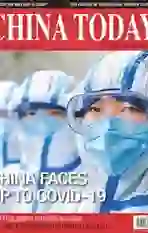From Infodemic to Normalcy
2020-03-23BYAUGUSTOSOTO
BY AUGUSTO SOTO

IS this virus almost the end of the world? Till now, it seems nothing like it, but there is a current of international opinions apparently reinforcing this idea. According to the World Health Organization (WHO), which has been keeping in close contact with China, when an epidemic emerges, another similar occurrence emerges simultaneously, namely an “infodemic.” This is how the situation we have been experiencing during the recent weeks was defined by Sylvie Briand, director of Infectious Hazard Management Department of the WHO. She said that the epidemic is not a pandemic, despite the increase in the number of people affected, especially in the province of Hubei, which overwhelmingly hosts the highest concentration of most cases. The term pan-demic is reserved only for a worldwide viral outbreak with multiple sources, which has not yet happened. Thus, currently the WHO is stressing that despite the inevitable viral increase in recent weeks, no aspect of the epidemic has fundamentally changed.
The death rate is still slightly higher than 2.0 percent, much lower than that of the 2003 SARS around 10 percent. And on a global scale the fatalities caused by COVID-19 continue to stay well below the levels of several known viruses, such as the seasonal flu. For example, last year the U.S. (with a population almost five times smaller than China) had 13 million cases of flu, and as a result caused 10,000 fatalities. Proportionally comparable figures are recorded annually throughout Europe.
Background Barely Explained
It is surprising that in recent weeks across various global mass media channels, the context and information that would help the public better understand the extent of the epidemic have not been explained(or hardly highlighted). First, it has not been adequately explained to the public that the cases detected have continued to increase inevitably because it happened to be the Chinese New Year holiday, and as is the case every year, people were visiting their hometowns or traveling abroad, leading to the movement of hundreds of millions of people in the worlds most populous country.
Second, many news outlets have not given due importance to the fact that this time, due to the virus, the return from holidays has been gradual, a measure of utmost importance. This guideline –which affects the reintegration of workers in different activities in an immense country – has been presented in such a way that it seems that things are to be out of control.
Third, little has been reported that the appreciable stillness on so many roads and avenues, with the population having returned or in the process of returning to their cities of origin, except in Hubei, is, at the same time, a sign of gradual return to normalcy under the new circumstances. With a shift system and to an important extent, thanks to the facilitation made possible by the Internet, ministries, businesses(large and small), publishing houses, and banks are operational in China. Likewise, universities and colleges are reinforcing their online activities. That is, there has been no paralysis but a readjustment that allows the continuity of activities.
Fourth, as for foreigners in China, it is obvious that a significant proportion have chosen to travel to their countries of origin to return later in a timely fashion. But in parallel, and this is less known, a proportion of them, especially those with long years of experience in the country, are returning if they have not remained in China during all these weeks. They do not see things so dramatically, they just remember the brief duration of the 2003 SARS or they stick to empirical data and what they see with their own eyes.
Fifth, it is true that there is still no vaccine. The SARS vaccine was not found until now long after it completely disappeared. So the international emergency continues with the need not to dramatize the virus. Doing so would entail unnecessary added damage to the current global situation, which has greatly improved compared with our interconnection in 2003.
The 2020 International Calendar
There is an understandable concern of directors of large companies and investors from several countries located along the Belt and Road Initiative (BRI) to reconcile projects with concrete expectations based on actors who are in and outside China. It would be very upsetting should projects that often involve colossal investments be delayed beyond a reasonable pause, because an interruption in governance would cascade bureaucratic decisions in various countries with dissimilar bureaucracies and risk material deterioration. It is a challenge shared by governments as well as by Chinese and foreign companies. This year, on the other hand, a series of relevant events will be held, including several related to the BRI, in addition to a new EU-China summit in Leipzig, and the China International Import Expo in autumn, among many other events. Chinese companies and their foreign counterparts need to prepare contingency plans to strengthen communication and avoid the decoupling and anti-globalization that the Trump administration obviously pursues, even in these delicate moments when what is most needed is a more global approach and not less.
More Scientific Exchanges
These days the scientific community across the globe are collaborating more than ever and racing against the clock in an effort to find an effective vaccine. Probably a closer collaboration will prevail. If so, it can be expected that the well-known and quasi-universal fight against climate change would find a comparable boost from the field of biology. The concept of a shared future for humankind might be reinforced. It is still too early to ensure this possibility, but the trend seems to point in this direction.
Solidarity and Future Challenges
On each continent there have been numerous examples of solidarity personally led by different state leaders and opinion leaders. The current epidemic is an occasion for the international community to prepare for future emergencies that might originate elsewhere in the world. COVID-19 is a wake-up call telling us that we face shared challenges.
